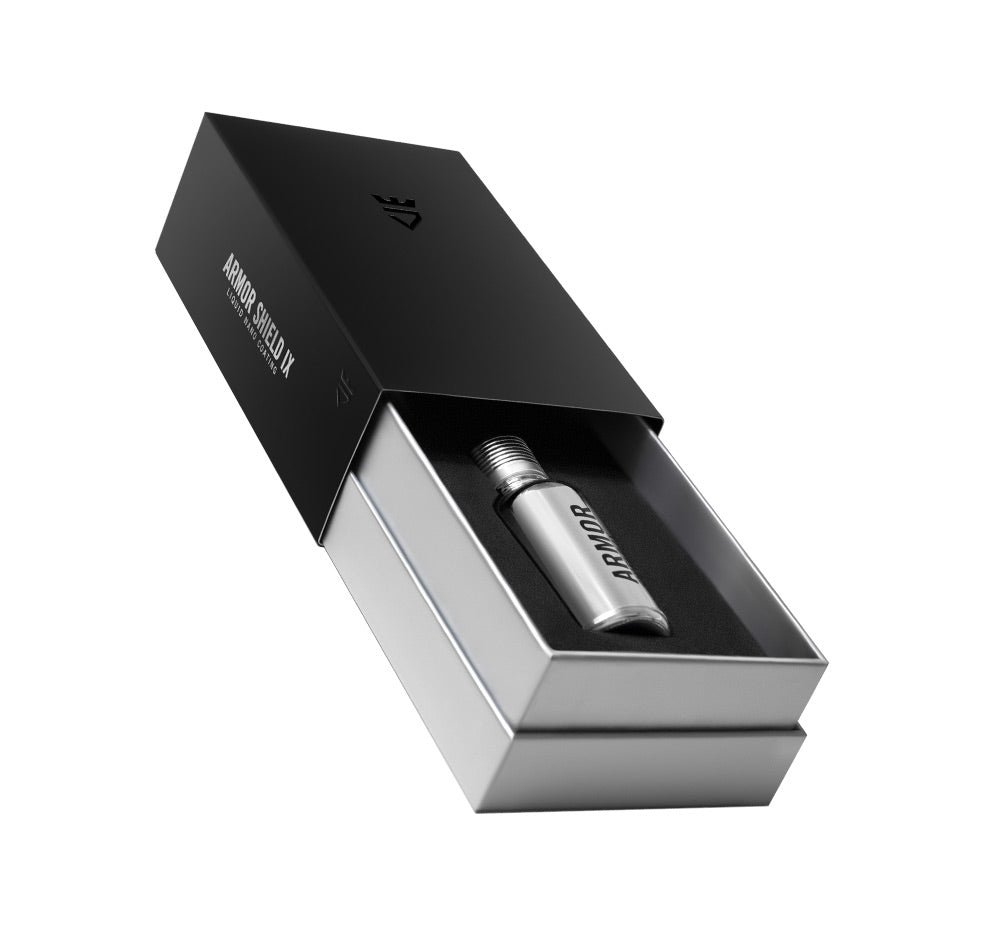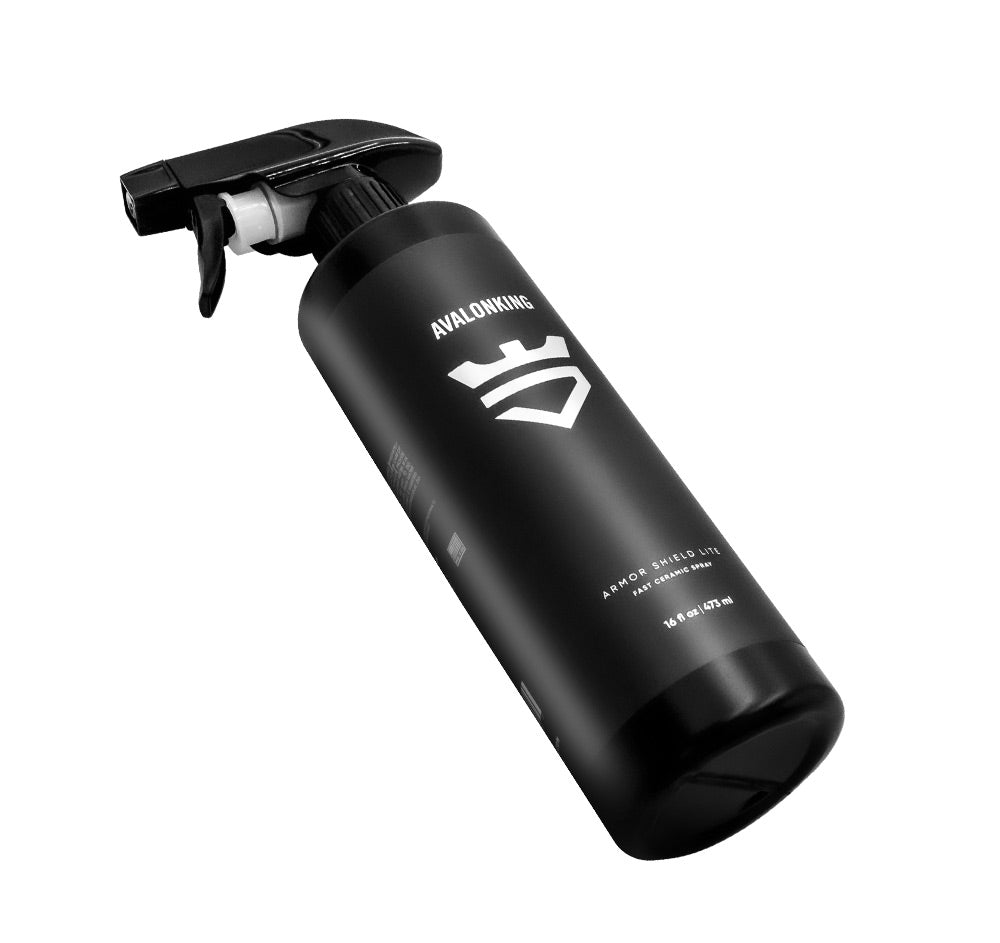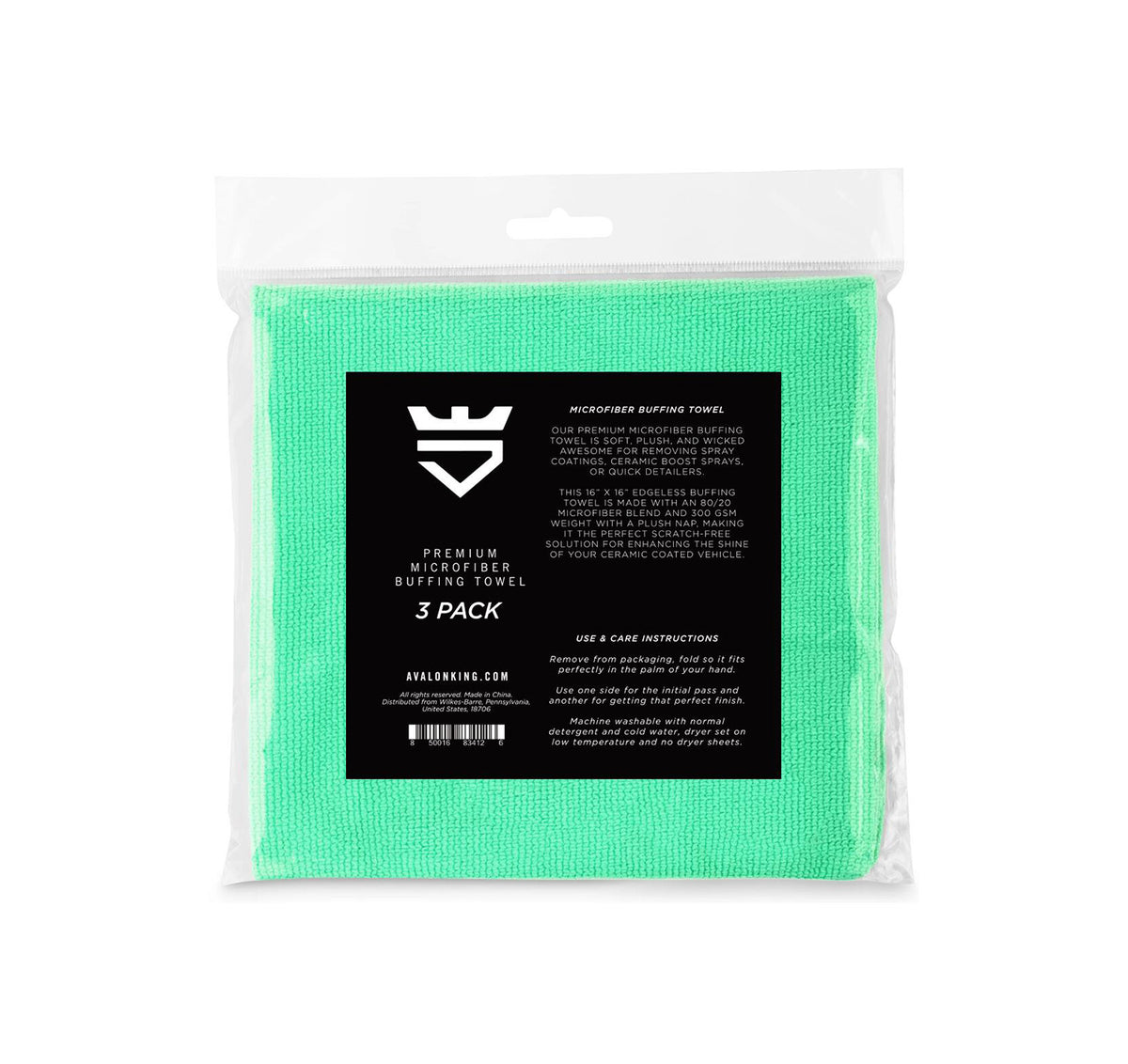From carbon fiber fender flares and chrome exhaust tips to glass windows and wheels, there's a home for Armor Shield IX nano-ceramic coating on pretty much any automotive surface that isn't spongy or soft to the touch.
But for as beneficial as a nano-ceramic coating can be for drivers looking for water and contaminant repelling properties, there are still plenty of people who have yet to give it a shot.
One of the biggest markets that continue to miss out on the perks provided by modern nano-ceramic coating products, is the RV and semi-truck sector. One would assume that these large-scale, long-distance haulers would be lining up to take advantage of the perks provided by this protective coating, but nope.
Whatever the case may be, we're here to assure RV and tractor-trailer operators alike that ceramic coating a big rig is indeed a wise decision. In the following paragraphs, we'll cover how much product you'll need to procure, things to watch out for, and what makes ceramic coating the ideal option for larger, long-distance vehicles.
We'll also go over a few of our favorite tips and tricks for helping make the ceramic coating of that heavy hitter go smoother than turbo spool on a cool autumn eve.
Quick Tip: If you own an RV or semi, chances are you have a top-mounted AC unit somewhere on your rig. While this may keep you cool in summer, once these things get leaky, the issues they create are not very "cool" at all. These leaks can damage the clear coat and can create one hell of a nasty stain in a ceramic coating if left unattended for long periods. So make sure those drain tubes are clear!
Why You Should Ceramic Coat Your RV or Semi
The primary reason why recreational vehicle (RV) and truck owners should ceramic coat their rigs, is the protection it provides to clear coat and paint. If you think repainting a car is expensive, wait until you get a load of how much an RV paint job costs!
A "Class A" paint job on an RV will set you back anywhere from $50,000–$200,000 on average. So when we say that protecting your RV with a nano-ceramic coating is a worthy investment, THIS is what we are talking about. But paint isn't the only thing that requires a protective layer.
According to RV and truck protectant specialist, Midwest Tinting, studies in America have found that commercial vehicle operators are highly prone to contracting skin cancer on the left side of their face and arm. Operating a left-hand-drive vehicle as a profession means spending the majority of your workweek with the left side of your body facing the sun and all of its UV rays.
To reduce these risks, the United States Department of Transportation has begun to allow UV blocking window film on certain commercial vehicles. However, while window film will help reduce UV ray-related maladies, it doesn't do jack-shit for painted exterior panels, plastics, bare metal, and other non-glass surfaces.
By pairing a high-quality window film with a 9H-rated nano-ceramic coating, you will not only protect your skin, but the exterior of the vehicle as well.
Quick Nerd Note: A ceramic coating will always last a lot longer when proper decontamination and installation procedures have been implemented. Using quality maintenance shampoo and ceramic coating booster sprays is equally important, as is the quality of the ceramic coating product itself. Storage environment, annual distances traveled, and contaminants encountered all play a role in the lifespan of a nano-ceramic coating.
7 Things to What to Watch Out for When Ceramic Coating an RV or Semi
1. Crushing Costs
For those of you who are wondering how much it costs to add an additional layer of ceramic coat to a semi or RV, that answer is about as complicated as your uncle's prenuptial marriage agreement.
Ceramic coating cost boils down to overall condition of the surface of vehicle, man-hours invested in the decontamination and detailing process, and whether or not you plan on taking the DIY approach, or aim to pass the job off to professional auto detailing services. This last option can be extremely expensive, and here's why.
Having an RV professionally ceramic coated by an auto care shop that specializes in caring for large vehicles will typically run you anywhere from $20–$40 per foot. Couple that with the average man-hour fees associated with RV and semi detailing, which tends to cost about $89 an hour, and you've got one hell of a pricey protection plan in play!
2. In Search of Space
If you opt to ceramic coat your rig yourself, the major challenge you will face will be finding a protected area large enough to host your rig for the ceramic coating's mandatory decontamination, paint correction, application, and curing phases. Taking the time to allocate a space where the vehicle can be safely parked for a few days, well away from wind, birds, bugs, and water are paramount to your success.
3. Decontamination Dillemas
The next issue is the daunting task of washing the vehicle itself, which will likely eat up an entire day, if not an entire weekend. There's no way to cut corners here either because even the slightest oversight can result in a contaminated surface that will cause your ceramic coating to look like crap before failing royally.
Take the time, spend the money, and get that semi, RV, or motor coach detailed from the roof down. By getting the roof out of the way first, you will avoid running the risk of having all of the filth that's been collecting up there running down the sides of your rig, and contaminating your freshly scrubbed siding.
4. Stock Up on Supplies
Speaking of scrubbing, it's probably a good idea to order more surface prep shampoo than you think you might need, and the same goes for the ceramic coating itself.
While we’ve had a couple of truck driver customers who were able to successfully coat their cab with just one kit, this is stretching it. If you plan on applying two layers (which we strongly suggest), you'll need to procure 2–3 kits, especially if you plan on hitting more than just painted exterior panels.
RVs on the other wrench, tend to require 4–6 kits on average depending upon overall size, the number of coatings required, and whether or not you plan on coating the interior and the glass.
5. The Fiberglass Fiasco
Finally, it is worth noting that older RV body panels are typically constructed from fiberglass, and the gelcoat on these parts can become chalky if not routinely maintained, which makes it difficult to get to a point where it can be deemed ceramic coating-ready. In contrast, certain gelcoats are so thick and porous, that they tend to absorb the coating entirely. So coat with caution folks!
To clarify, it is still possible to apply a ceramic coating on a fiberglass surface, but only if the right conditions are met, and the area you plan on coating has been well maintained. On an RV or an older semi with fiberglass aero components, eliminating the need to wax and polish a gelcoat every month or so definitely makes a nano-ceramic coating well worth its upfront cost.
6. Headlight Headaches
Certain RV and semi headlights utilize a polycarbonate structure, which requires a dash of extra TLC during the prep phase. Most polycarbonate components come with a "No Alcohol Wipe Warning" of some sort, so if you plan on decontaminating those lenses with AvalonKing's IPA Prep Spray, do so at your own risk.
7. External Extras
Always start by ceramic coating the roof and other upper areas of your RV or semi. Once you are done, slide down and remove any exterior braces, housings, ladders, and other bolt-ons from the vehicle's exterior. Most of the exterior trim on these machines will easily snap off or unbolt, thus making the act of separately coating these accessories a cinch. This also makes the process of coating something like an RV extra easy, for at that point it is just a massive rectangle that can be easily measured out.
Quick Tip: From a decontaminating standpoint, the easiest option involves taking your RV or semi-truck to a professional truck and RV auto body detailing shop. This will cost a pretty penny, but it will return one hell of a beautiful vehicle, and also save you a considerable amount of sweat equity and back pain, thus allowing you to focus your efforts 100% on the ceramic coating process.
3 RV and Semi-Exclusive Parts That Benefit the Most From Nano-Ceramic Coatings
When it comes to ceramic coating an RV or a semi-truck, there are a ton of perks to consider.
1. Massive Mirrors
For instance, all of these big rigs have monolithic mirrors, so having a product that will reject road grime, dust, ice build-up, condensation, and other side-mirror maladies is a massive game-changer.
2. Coat Your Cabin
Another great thing about an RV or a sleeper semi is that large expanses of the cabin benefit greatly from a nano-ceramic coating. For RV owners, the bathroom and kitchen are typically the first areas you will want to coat, as it makes clean-up effortless and it keeps slick surfaces looking super shiny.
3. Guard Your Grill
On the outside, you'll find that the sheer size of the front end of semi-trucks and RVs means triple the bug guts, bird crap, and road grime. A ceramic coating's hydrophobic properties provide the key to keeping things clean, both up front, and along a rig's fairings, fenders, and areas where snow and road grime tend to accumulate.
Quick Nerd Note: A few other RV and semi oriented components that benefit greatly from a ceramic coating include vinyl decals, which are notorious for fading, and all things chrome and exhaust related. We won't get too deep into these topics today, just know that you can check out the AvalonKing blog if you want to learn more about how Armor Shield IX rules at protecting chrome and does a bang-up job of shielding decals.
Parting Shots
Those of you who have driven in Florida during "love bug season" know what I'm talking about. Gross...
Ceramic coatings not only create a layer of protection that lasts for years, and pack water-beading perks that border being mind-blowing, but they also generate a brilliant shine that is impossible to beat.
So if you are in search of a shine-enhancing, ultra-durable layer of security for your RV or semi truck's exoskeleton (I told you we'd figure that out), then grab an Armor Shield IX bundle deal and keep on truckin'!











2 comments
Nan Wallace
I have an Oliver Elite II camper. I had it ceramic coated a couple of years ago. I want to put rain diverters over the windows now. How do I make them stick to the fiberglass now that I have the ceramic coating? Thank you so much,.
I have an Oliver Elite II camper. I had it ceramic coated a couple of years ago. I want to put rain diverters over the windows now. How do I make them stick to the fiberglass now that I have the ceramic coating? Thank you so much,.
robert moore
does all the above information also apply to the new max formula? or GOAT also???
does all the above information also apply to the new max formula? or GOAT also???